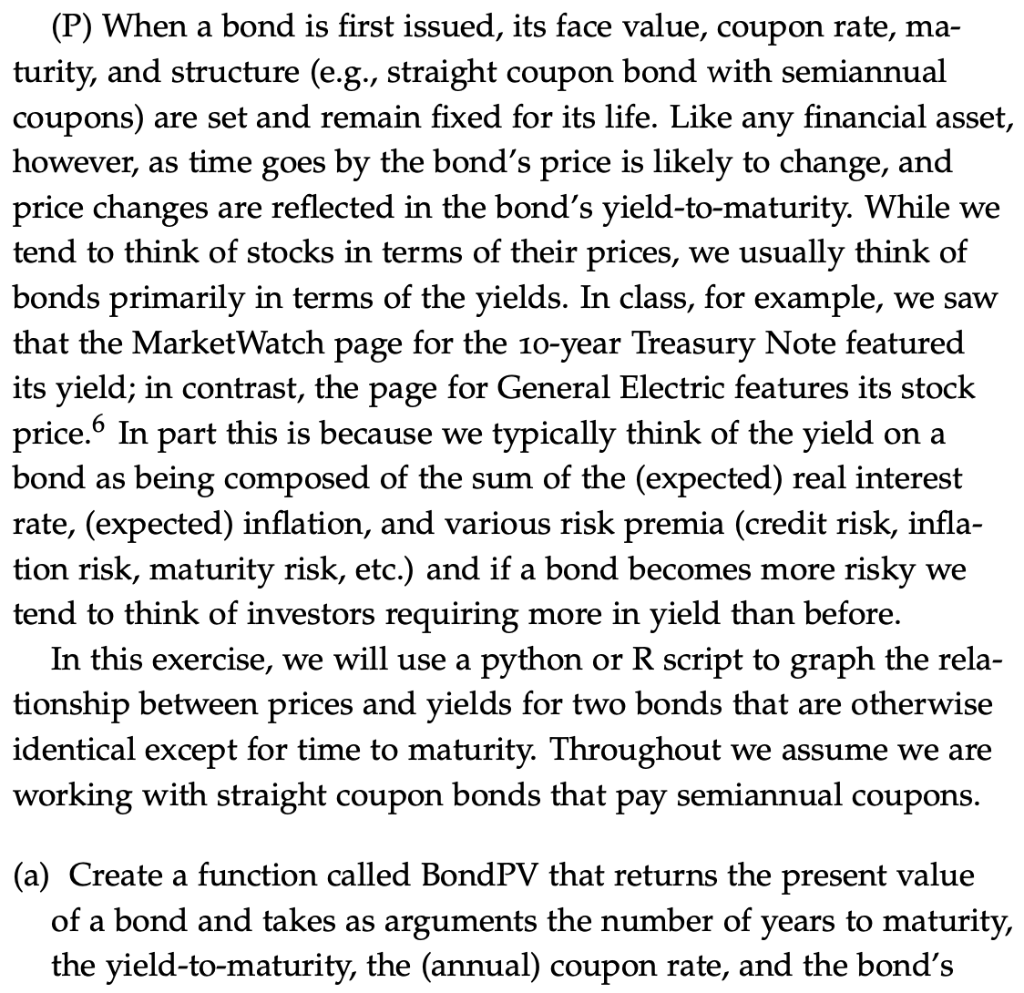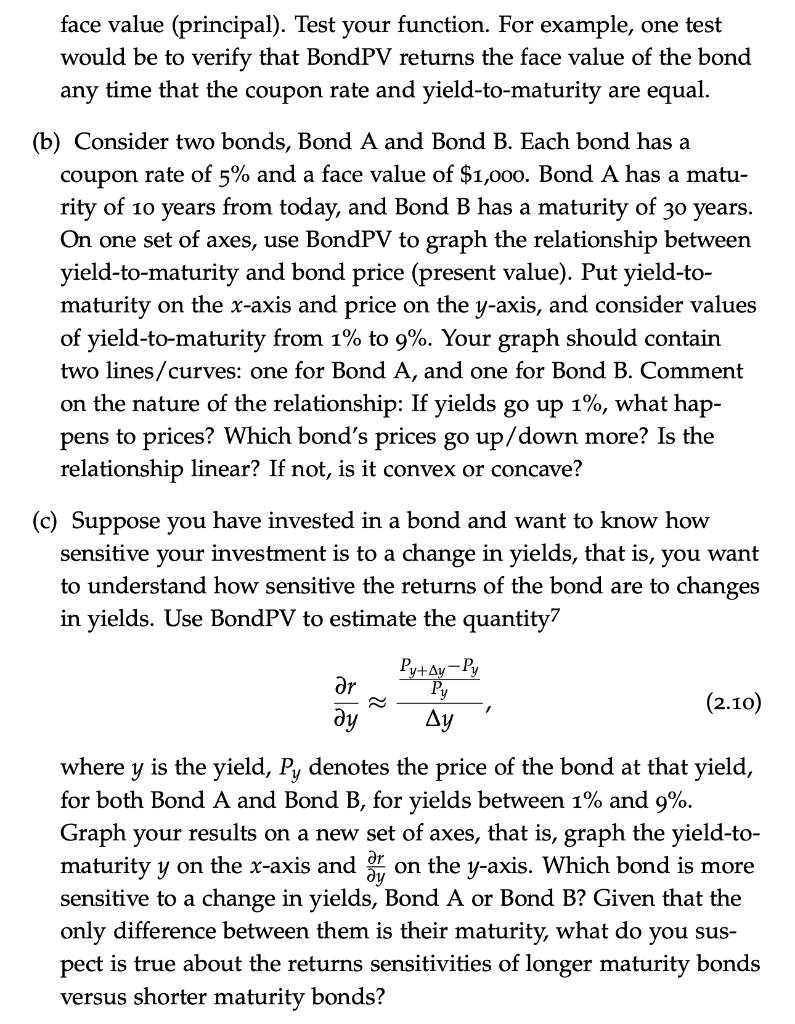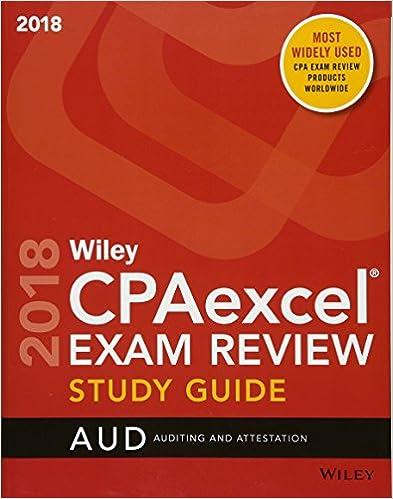Please Using R


(P) When a bond is first issued, its face value, coupon rate, ma- turity, and structure (e.g., straight coupon bond with semiannual coupons) are set and remain fixed for its life. Like any financial asset, however, as time goes by the bond's price is likely to change, and price changes are reflected in the bond's yield-to-maturity. While we tend to think of stocks in terms of their prices, we usually think of bonds primarily in terms of the yields. In class, for example, we saw that the MarketWatch page for the 10-year Treasury Note featured its yield; in contrast, the page for General Electric features its stock price. In part this is because we typically think of the yield on a bond as being composed of the sum of the (expected) real interest rate, (expected) inflation, and various risk premia (credit risk, infla- tion risk, maturity risk, etc.) and if a bond becomes more risky we tend to think of investors requiring more in yield than before. In this exercise, we will use a python or R script to graph the rela- tionship between prices and yields for two bonds that are otherwise identical except for time to maturity. Throughout we assume we are working with straight coupon bonds that pay semiannual coupons. (a) Create a Bo PV that returns the present value of a bond and takes as arguments the number of years to maturity, the yield-to-maturity, the annual) coupon rate, and the bond's face value (principal). Test your function. For example, one test would be to verify that BondPV returns the face value of the bond any time that the coupon rate and yield-to-maturity are equal. (b) Consider two bonds, Bond A and Bond B. Each bond has a coupon rate of 5% and a face value of $1,000. Bond A has a matu- rity of 10 years from today, and Bond B has a maturity of 30 years. On one set of axes, use BondPV to graph the relationship between yield-to-maturity and bond price (present value). Put yield-to- maturity on the x-axis and price on the y-axis, and consider values of yield-to-maturity from 1% to 9%. Your graph should contain two lines/curves: one for Bond A, and one for Bond B. Comment on the nature of the relationship: If yields go up 1%, what hap- pens to prices? Which bond's prices go up/down more? Is the relationship linear? If not, is it convex or concave? (c) Suppose you have invested in a bond and want to know how sensitive your investment is to a change in yields, that is, you want to understand how sensitive the returns of the bond are to changes in yields. Use BondPV to estimate the quantity Pytay Py (2.10) Ay where y is the yield, Py denotes the price of the bond at that yield, for both Bond A and Bond B, for yields between 1% and 9%. Graph your results on a new set of axes, that is, graph the yield-to- maturity y on the x-axis and Oy on the y-axis. Which bond is more sensitive to a change in yields, Bond A or Bond B? Given that the only difference between them is their maturity, what do you sus- pect is true about the returns sensitivities of longer maturity bonds versus shorter maturity bonds








